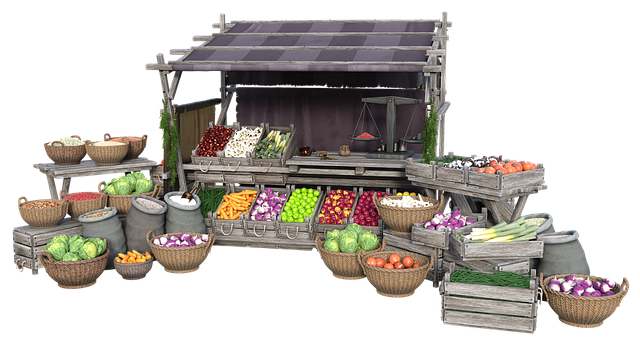The rise of local food delivery services has transformed meal preparation by offering direct access to fresh, locally sourced produce from farms, empowering consumers to support sustainable agriculture, promote environmental stewardship, and foster healthier eating habits. These platforms benefit both agricultural communities and individual dietary choices, ensuring produce reaches customers at peak ripeness through direct connections between farmers and consumers. By leveraging technology for efficient route optimization and encouraging partnerships, local food delivery networks can revolutionize meal prep and distribution while enhancing community resilience and food security.
The growing trend of local food delivery services is transforming the way we access fresh, farm-grown produce. This article explores the rise of these services and their profound impact on fostering direct connections between farms and consumers. By delving into the benefits for both local agriculture and communities, we uncover how meal preparation and home delivery can drive sustainable practices. We also propose strategies to expand local food delivery networks, ensuring a vibrant future for farm-to-table initiatives.
- The Rise of Local Food Delivery Services and Their Impact on Farm-to-Table Practices
- Benefits of Supporting Local Farms through Meal Preparation and Home Delivery
- Building Sustainable Communities: Strategies for Expanding Local Food Delivery Networks
The Rise of Local Food Delivery Services and Their Impact on Farm-to-Table Practices

The rise of local food delivery services has significantly shifted the way we consume and access fresh, locally sourced produce. With a growing demand for convenient meal preparation options, these platforms have empowered consumers to support local farms directly from the comfort of their homes. By offering a wide variety of farm-to-table products, local food delivery has made it easier for customers to make sustainable choices, promoting environmental sustainability and strengthening agricultural communities.
These services facilitate direct connections between farmers and consumers, eliminating intermediaries and ensuring that produce reaches customers fresh and flavorful. As a result, local farms benefit from increased revenue and stability, fostering a more robust and resilient food system. Moreover, the convenience of home delivery encourages meal preparation with locally sourced ingredients, encouraging healthier eating habits and reducing food waste.
Benefits of Supporting Local Farms through Meal Preparation and Home Delivery

By opting for local food delivery services that prioritize meal preparation, consumers directly contribute to the sustainability and thriving of their regional agricultural landscape. This practice supports small-scale farmers who often face challenges in reaching markets beyond their immediate areas. With local food delivery, produce can be picked at peak ripeness and delivered swiftly to customers’ doors, preserving freshness and maximizing nutritional value.
Moreover, such services foster a closer connection between consumers and their food sources. They offer transparency regarding the origins of ingredients, allowing folks to make informed choices that align with their values. This direct support encourages the preservation of diverse farming practices, promotes environmental stewardship, and strengthens community resilience.
Building Sustainable Communities: Strategies for Expanding Local Food Delivery Networks

Building Sustainable Communities: Strategies for Expanding Local Food Delivery Networks
In today’s digital era, local food delivery has emerged as a powerful tool to connect farmers and consumers directly, fostering stronger communities and promoting sustainable agricultural practices. By streamlining meal preparation and distribution, local delivery networks can significantly reduce food miles, minimizing environmental impact and enhancing food security. One effective strategy is to leverage technology for efficient route optimization, ensuring timely deliveries while reducing fuel consumption. Additionally, partnerships between farms, restaurants, and delivery services can create win-win scenarios, where surplus produce from farmers is utilized in meal preparation, reducing waste and supporting local economies.
Expanding these networks requires collaborative efforts among various stakeholders. Local governments can play a pivotal role by offering incentives, providing infrastructure support, and facilitating communication platforms to connect farms, chefs, and delivery operators. Community-based initiatives, such as farmers’ markets and community supported agriculture (CSA) programs, further strengthen the local food ecosystem. By educating consumers about the benefits of locally sourced food, these initiatives encourage demand for fresh, seasonal produce, creating a more sustainable and resilient food system.
Local food delivery services have not only revolutionized the way we access fresh, farm-grown produce but also strengthened the bond between consumers and local farms. By choosing meal preparation and home delivery, individuals can directly support sustainable agricultural practices, promote environmental stewardship, and contribute to vibrant, resilient communities. As these services continue to expand, adopting strategies that foster collaboration and innovation will be key to ensuring a thriving local food ecosystem for generations to come.
